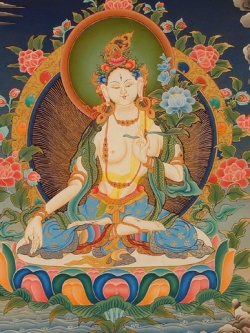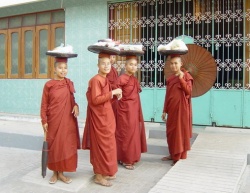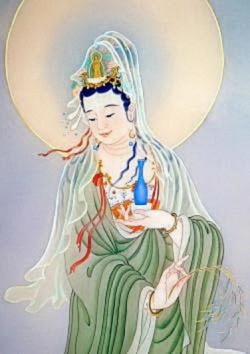Difference of meaning of word Sangha for Mahayana and Theravada
Supaṭipanno bhagavato sāvaka-saṅgho,
Well-faring is the Blessed One's saṅgha of disciples.
Uju-paṭipanno bhagavato sāvaka-saṅgho,
Upright-faring is the Blessed One's saṅgha of disciples.
Ñāya-paṭipanno bhagavato sāvaka-saṅgho,
Path-faring is the Blessed One's saṅgha of disciples.
Sāmīci-paṭipanno bhagavato sāvaka-saṅgho,
Properly-faring is the Blessed One's saṅgha of disciples.
Yadidaṃ cattāri purisa-yugāni aṭṭha purisa-puggalā:
That is, the four pairs of people, the eight individual people.
Esa bhagavato sāvaka-saṅgho —
This is the Blessed One's saṅgha of disciples,
Āhuneyyo pāhuneyyo dakkhiṇeyyo añjali-karaṇīyo,
worthy of gifts, worthy of hospitality, worthy of offerings, worthy of respect,
Anuttaraṃ puññakkhettaṃ lokassāti.
an incomparable field of merit for the world.
The four pairs (eight types) of people mentioned above are the eight ariya-puggala, the stream-enterer, the once-returner, the non-returner, and the arahant. The number eight comes from the technicality that at the moment of attaining any one of the states, one is technically not attained to it, but is on the path the becoming it (this is the first type). The next moment, one has become it (this is the second type).
More food for though:
There are two kinds of bhikkhus, viz. the Vinaya bhikkhu and the sutta bhikkhu. The Vinaya bhikkhu is of course the monk who leads a good life based on Vinaya rules. In the time of the Buddha the Lord himself ordained some of them by saying, "Come hither, bhikkhu". Most of them, however, were ordained by the Sangha in accordance with the Vinaya rules.
According to the commentaries, the sutta-bhikkhu is any person who practises the Dhamma to get liberated from the cycle of life. He is not necessarily a member of the Sangha for he may be a deva or a lay man. The bhikkhu referred to in Ariyāvāsa-sutta is the sutta-bhikkhu, a term that applies to any human being, deva or brahmā who is committed to the practice of the Dhamma.
Commitment to the Dhamma consists in the practice of morality, tranquility and wisdom ( sīla, samādhi and paññā). By virtue of his moral purity the yogī overcomes active defilements ( vitakkama kilesā) such as greed, hatred, etc. that leads to grave moral transgressions like killing, stealing, lying and so forth. The yogī who develops tranquility ( samādhi ) is able to forestall the eruption of dormant or pariyutthana kilesā (defilements). Finally the yogī develops insight-knowledge and wisdom, thereby overcoming potential defilements that still lie latent in us ( anusaya kilesā) and arise under relevant circumstances.
The practice of the Dhamma is somewhat like cutting away a piece of wood with a small axe, each stroke helping to get rid of the unwanted fragments or digging the earth with a spade and making the heaps of earth come out one after another. Likewise, if we constantly make a note of all the psycho-physical phenomena arising from six sense-organs, the defilements become weak and wither away in due course of time. Thus when the yogī develops insight-knowledge ( Vipassanā-paññā) he is in effect doing away with defilements. Such a yogī is designated a sutta-bhikkhu, regardless of his outward appearance as a layman or a monk or a deva.
Mahasi Sayadaw, Ariyavasa Sutta


